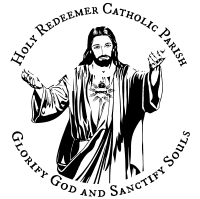The Eucharist, Part 2
Jesus Christ: Yesterday, Today, and Forever ~
Last week I began a twenty part series on the Eucharist. In case you missed the first one, you can find it here. This is in keeping with Archbishop Etienne’s pastoral letter on the Eucharist that you can find here (in case you missed it). Enjoy.
May God Bless You,
Fr. Thomas Nathe
Trent Horn, 20 Answers – The Eucharist. Catholic Answers Press. 2015
Get your own copy from Catholic.com
Question #2:
How do non-Catholic views of the Eucharist differ from the Catholic belief?
Nearly all Christians celebrate some form of the Eucharist by consuming bread and wine in memory of Christ’s death and Resurrection. Protestants [non-Catholic & non-Orthodox Christians] usually refer to the Eucharist as the Lord’s Supper and do not believe that Christ is physically present in the bread and wine at their services or at the Catholic Mass. The various Protestant views on this sacrament can be found along this continuum:
Rejection of the sacrament: Some denominations do not celebrate the Eucharist. For example, the Salvation Army is usually known for its charity work, but it is actually a self-proclaimed Christian denomination. According to an article in the Los Angeles Times, “Catherine Booth, the influential wife of the founder [of the Salvation Army], admired the piety and practices of Quakers, who did not perform baptisms or Communion rites. In keeping with the Salvation Army’s theology of sanctification – the Holy Spirit active in the lives of the holy people – she saw all of life as sacramental. Although he did not prohibit the sacraments, William Booth declared in 1883 that the rites would not be endorsed as official worship of the Army.”
A memorial dinner: This view is common among Baptists and other “born-again” Christians. According to one Baptist writer, “the Supper functions as proclamation, the presence of Christ in the indwelling Spirit not only assures forgiveness through the Word; he also convicts of unbiblical patterns of life and thought.” According to this view, the Eucharist is a sign that points us to Christ, but Christ is not present in the Eucharist. Instead, Christ is present in the “indwelling Spirit” of the believer who receives the Eucharist.
A real, nonphysical presence: The Reformed tradition observed by Presbyterians holds that Christ is actually present in the Eucharist, but not in a physical way. In 1647, the Westminster Confession of Faith, a popular confession made by those in the Reformed tradition, said that “Worthy receivers, outwardly partaking of the visible elements, in this sacrament, do then also, inwardly by faith, really and indeed, yet not carnally and corporally, but spiritually [emphasis added], receive and feed upon Christ crucified, and all benefits of his death.” This can be considered a “conduit view,” since Christ’s body isn’t located in the bread and wine but is instead made manifest through them.
A sacramental union: In contrast to the Reformed position, Martin Luther held a stronger position on the Real Presence of Christ in the Eucharist. He claimed that the bread and wine exist in the Eucharist in a natural state while the body and blood of Christ exist in those same objects in a supernatural state. According to Luther, “Why then should we not much more say in the Supper, ‘This is my body,’ even though bread and body are two distinct substances, and the word ‘this’ indicates the bread? Here, too, out of two kinds of objects a union has taken lace, which I shall call a ‘sacramental union,’ because Christ’s body and the bread are given to us as a sacrament.” In other words, the consecrated bread and wine fully contain Christ’s body and blood, but they do not become Christ’s body and blood.
A physical change: The Catholic view of the Eucharist is different from the Protestant views because Catholics know that the bread and wine at Mass actually become the physical body and blood of Christ. After consecration, the bread and wine no longer remain, and in their place is the body, blood, soul, and divinity of Jesus Christ. The Council of Trent taught that in the Eucharist there is a change “of the whole substance of the bread into the substance of the body of Christ our Lord, and of the whole substance of the wine into the substance of this blood.” [More on this change in our next installment.]
Eastern Orthodox Churches hold the same view of the Eucharist as Catholics, but they sometimes use different vocabulary when describing the physical change from bread and wine into body and blood. Because Eastern Orthodox priests retain valid holy orders despite not being in union with the pope, and because they also subscribe to a belief in Christ’s Real Presence in the Eucharist, a Catholic in an emergency situation (e.g., in danger of death) may receive the Eucharist at an Orthodox service.
Trent Horn,
Catholic Answers Press

